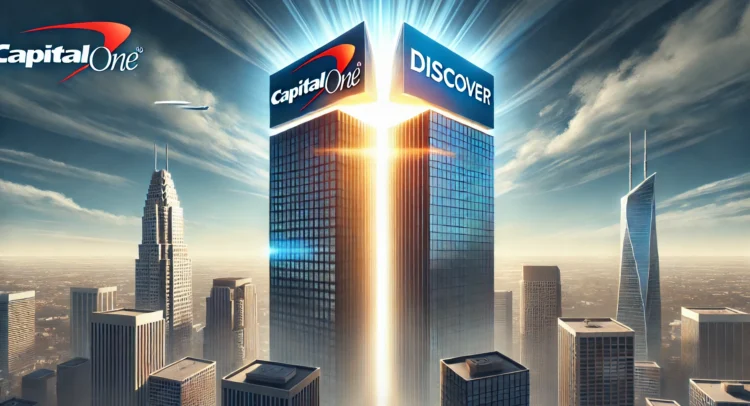After more than a year of speculation, debate, and waiting on regulators, the merger between Capital One (COF) and Discover is finally done. On April 18, 2025, U.S. banking regulators gave the green light to the $35.3 billion all-stock acquisition, creating a financial giant set to rattle the credit card industry in a big way. Although the markets have been closed since last Thursday, Apr. 17, its stock is already showing positive momentum with an over 4% rise in pre-market trading.
If you’re a retail investor, this could have ripple effects across your portfolio, especially if you’re holding shares in credit card networks, major banks, or fintech disruptors. Let’s unpack what this all means, what’s changing, and what you should keep an eye on.
Why This Merger Matters
Visa (V) and Mastercard (MA) have long ruled the payment processing world. They don’t issue cards themselves, but almost every bank-issued credit card runs on their networks. Discover has always been the underdog; it processes its own cards and runs its own network, but on a much smaller scale.
That’s where Capital One comes in. Known for its aggressive growth and presence in the subprime credit market, Capital One now gains control of Discover’s entire payment network. This means the combined company is not just a bigger credit card issuer — it’s now a direct competitor to Visa and Mastercard in how transactions get processed.
In the long run, this could seriously challenge the dominance of the “big two” and open doors for more innovation, better rewards, and possibly even lower fees (though that’s still TBD).
Deal Details: What Just Happened?
The deal, first announced in February 2024, underwent a full year of regulatory scrutiny. Regulators like the Federal Reserve and the Office of the Comptroller of the Currency (OCC) eventually approved it, but not without attaching some strings.
Here are the key facts:
- Deal Value: $35.3 billion, all in Capital One stock
- Share Exchange: Discover shareholders get 1.0192 Capital One shares for each Discover share
- Closing Date: Expected to wrap up May 18, 2025
- Ownership Split: Capital One shareholders will own 60% of the new company, and Discover shareholders will get 40%
- New Status: The 8th largest U.S. bank, and largest credit card issuer by outstanding balances
What to Expect in the Short-Term
This wasn’t all smooth sailing. Regulators fined Discover $250 million for overcharging fees between 2007 and 2023. Capital One will have to clean up that mess, submit a corrective plan, and ensure these issues don’t carry over to the new company.
The Capital One–Discover merger creates a rare financial giant that can both issue credit cards and run its own payment network—something that challenges the long-standing Visa–Mastercard duopoly. Capital One may shift more transactions to the Discover network in the short term, pressuring competitors and shaking up the market. But with fewer major issuers, consumers—especially subprime borrowers- could face higher rates or fewer choices. Still, the merger opens the door to better rewards, broader card acceptance, and faster innovation, signaling a significant shift in the U.S. credit card landscape that investors should watch closely.
Bottom Line for Investors
This merger is a long-term play. It may take a year or more before the real benefits (or challenges) appear in earnings. However, it creates a third major player in the U.S. credit card ecosystem, which investors haven’t seen in a long time.
















